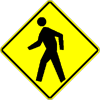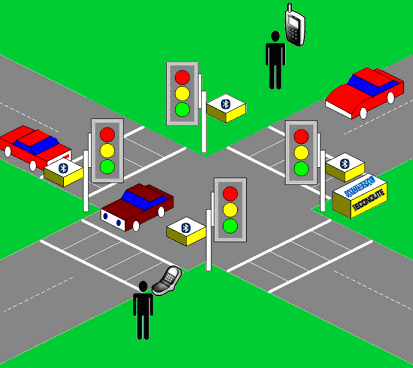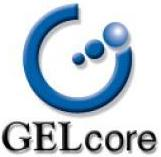URNA - Pedestrian Navigation Using Bluetooth Technology
 The Universal Real-time Navigational Assistance (URNA) project was a senior design project for the Jack Baskin School of Engineering at the University of California, Santa Cruz during the Fall 2006 and Winter 2007 quarters. Our goal was to design and implement a pedestrian navigation system using Bluetooth technology. The primary objective was to assist the visually impaired at traffic intersections, by relaying information required to cross the intersection safely, as well as nearby bus routes, and other pertinent information. Due to the ubiquity of Bluetooth-enabled mobile phones, the system aimed to enable access to a wide audience.
The Universal Real-time Navigational Assistance (URNA) project was a senior design project for the Jack Baskin School of Engineering at the University of California, Santa Cruz during the Fall 2006 and Winter 2007 quarters. Our goal was to design and implement a pedestrian navigation system using Bluetooth technology. The primary objective was to assist the visually impaired at traffic intersections, by relaying information required to cross the intersection safely, as well as nearby bus routes, and other pertinent information. Due to the ubiquity of Bluetooth-enabled mobile phones, the system aimed to enable access to a wide audience.
The project began on October 5, 2006 with team members Shawn Bohonos, Alexander Lee, Amir Malik, and Chung Thai. The project completed on March 23, 2007 and our team won second place in the Winter 2007 Engineering Design competition! On June 11, Shawn and Amir presented a paper at HealthNet 2007, The 1st International Workshop on Systems and Networking Support for Healthcare and Assisted Living Environments, which was held in conjunction with the ACM MobiSys 2007 conference in Puerto Rico. Thanks to all of our sponsors!
Project Motivation
The general idea is to use Bluetooth as an assistive technology for both visually impaired and sighted people. The system will consist of a series of short-range (between 5 and 20 meter radius) Bluetooth beacons that broadcast location-aware information to nearby Bluetooth devices. Any person with a Bluetooth-enabled mobile phone will be able to take advantage of the system. Transmitters could be installed at traffic intersections to alert the visually impaired of the location of the crosswalk and when it is safe to cross. Similarly, a beacon could be installed on a bus and when it comes in range at a bus stop, it would be able to alert people of the route number, destination, etc.
Design Overview
The scope of our project is to create a system to help visually impaired pedestrians navigate a traffic intersection. The system consists of two major components:
- Navigation Controller (NavCon): This is the main hardware that contains the necessary interface to the traffic signal controller and any audio or text data that is to be broadcast to nearby devices. In addition, this unit controls a series of Bluetooth radio modules, that are mounted on top of traffic light poles.
- Pedestrian Navigator (PedNav): This is the software that will run on Java-enabled mobile phones. The software will look for Bluetooth beacons from NavCon and alert the device owner, depending on their desired information settings, any audio messages relayed by beacons.
The idea is to design and prototype a small Bluetooth transmitter that can be used to broadcast information to anyone carrying a Bluetooth-enabled cell phone. As you know, Bluetooth is a wireless protocol that enables device discovery and data transmission over a short range (5-10 meters). We believe that Bluetooth transmitters could be embedded in critical locations, such as at a bus stop, at a traffic intersection, or near a building entrance, in order to provide useful information to visually impaired (as well as sighted) individuals. More and more people are carrying cell phones, and more and more cell phones are being equipped with Bluetooth, so we expect this technology to be beneficial to many. Think for example at a transmitter embedded in a bus stop, which can provide information about oncoming buses. Or at a traffic intersection, providing information about the type of intersection (one way, with an island in the middle...) as well as about whether the traffic light says “WALK”.
Documents
These are the final slides and papers produced by the URNA team:
- URNA Midterm Presentation (CMPE 123A) - November 2, 2006
- URNA Final Report (CMPE 123A) - December 1, 2006
- URNA Final Presentation (CMPE 123A) - December 6, 2006
- URNA Midterm Presentation (CMPE 123B) - February 2, 2007
- URNA Final Project Report (CMPE 123B) - March 19, 2007
- URNA Final Presentation (CMPE 123B) - March 22, 2007
- URNA Competition Presentation (CMPE 123B) - March 23, 2007
- URNA HealthNet 2007 Paper - Universal Real-Time Navigational Assistance (URNA): An Urban Bluetooth Beacon for the Blind
- URNA Presentation for HealthNet'07 at ACM MobiSys 2007 - June 11, 2007
Although the project is now over, the URNA team may still be contacted at urna AT projects DOT unoc DOT net for any questions regarding our research.
Some members of the URNA team have founded a startup to develop an idea using real-time Location Based Services. Please visit RouteMe² Technologies to find out more!
Demonstration Video
On June 6, 2007 we created the following video that showcased our system. Some more description about this particular intersection setup can be found in the HealthNet'07 presentation above.




